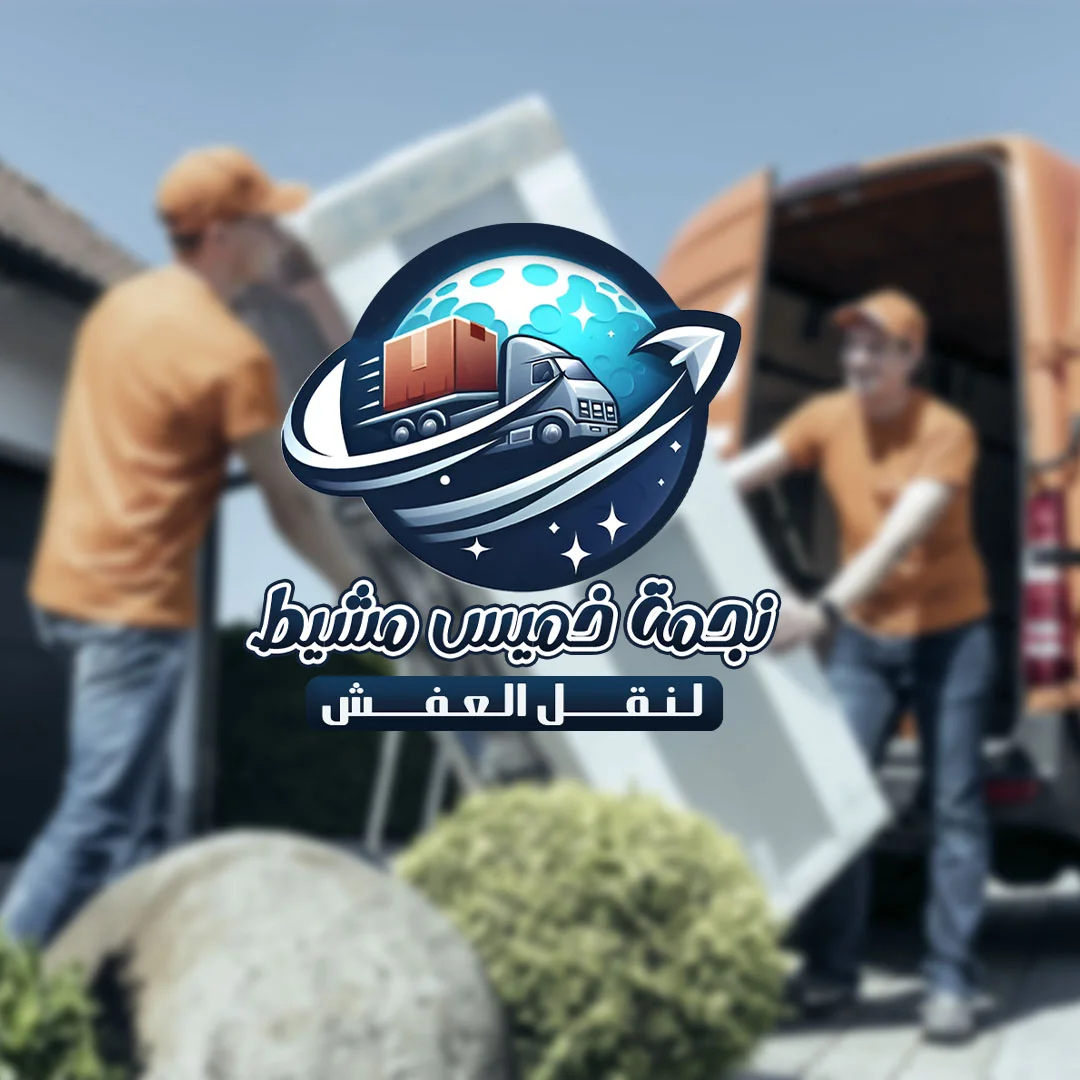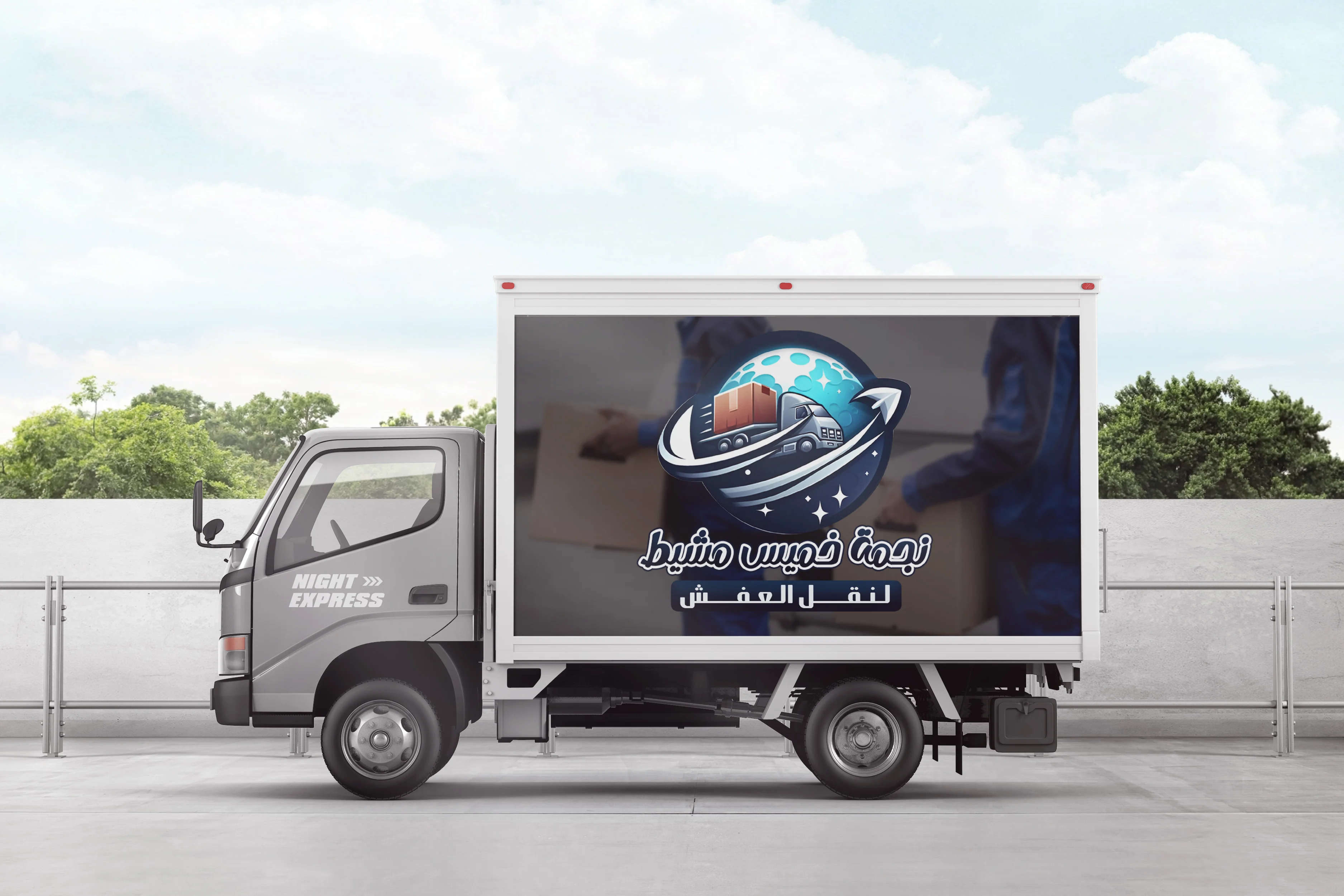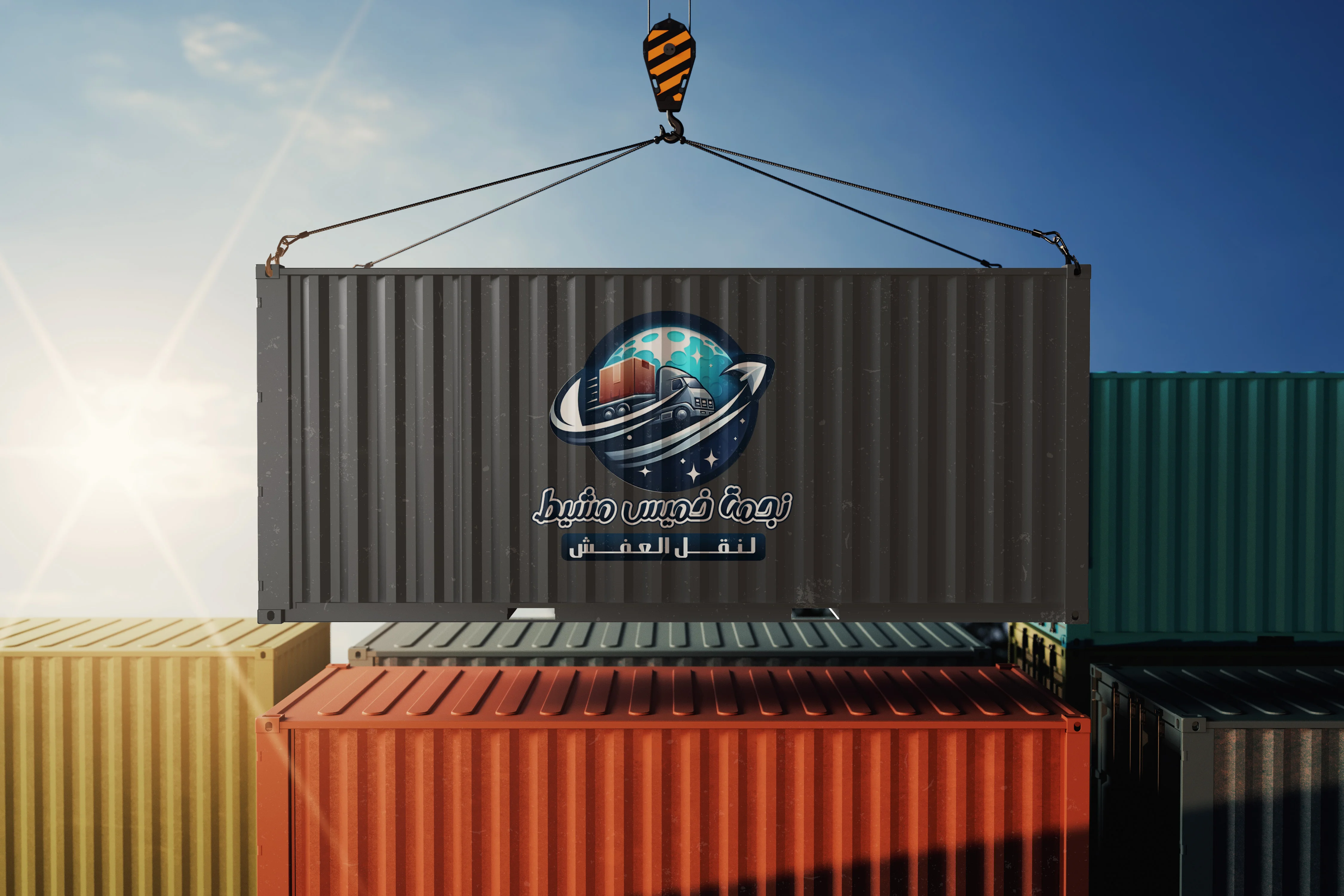دينا نقل اثاث جازان: خدمة موثوقة وسريعة لنقل أثاثك بأمان إذا كنت تبحث عن خدمة موثوقة وسريعة لنقل أثاثك بأمان في جازان، فإن شركة "دينا نقل اثاث جازان" هي الخيار الأمثل لك. تتمتع الشركة بخبرة واسعة في مجال نقل الأثاث، وتضم فريق عمل محترف ومدرب على أعلى مستوى من الكفاءة. تقدم الشركة خدمات نقل الأثاث بسيارات مجهزة ومجموعة متنوعة من الأدوات والمعدات اللازمة لضمان سلامة الأثاث أثناء عملية النقل. بالإضافة إلى ذلك، تهتم الشركة بضمان وصول الأثاث شركة نقل عفش بجازان بسرعة إلى وجهته دون أي تأخير. باختصار، إذا كنت تبحث عن خدمة نقل أثاث موثوقة وسريعة في جازان، فإن "دينا نقل اثاث جازان" هي الشركة المثالية لتلبية احتياجاتك. فلا تتردد في الاتصال بهم للاستفادة من خدماتهم الممتازة.
دينا نقل اثاث هي شركة متخصصة في خدمات نقل الأثاث في منطقة جازان. نحن نقدم خدمات موثوقة وسريعة لنقل أثاثك بأمان ودقة. تعتمد خدماتنا على فريق محترف ومدرب تدريباً عالياً وعلى تجهيزات نقل متطورة لضمان تجربة نقل مريحة وسهلة لعملائنا. نقدم خدمات نقل الأثاث داخل جازان وخارجها، بما في ذلك تغليف وتغليف الأثاث ونقله بأمان دون أي تلفيات. كما نقدم خدمات تفكيك وتركيب الأثاث لتسهيل عملية النقل وضمان سلامته. نحن نهتم بتلبية احتياجات عملائنا بشكل كامل ونضمن رضاهم التام عن خدماتنا. فلدينا سمعة طيبة في مجال خدمات نقل الأثاث ونحظى بثقة عملائنا الذين اختارونا لنقل أثاثهم. إذا كنت بحاجة إلى خدمات نقل الأثاث في جازان، فلا تتردد في الاتصال بنا وسنكون سعداء بتقديم مساعدتنا لك في هذا الشأن.
خدمات دينا نقل اثاث جازان: الاختيار الأمثل لنقل أثاثك بأمان

دينا نقل اثاث جازان توفر خدمة نقل الأثاث بكفاءة وأمان، حيث يتم استخدام دينا مجهزة بأحدث التقنيات لضمان وصول الأثاث بسلامة إلى وجهته.
دينا نقل اثاث جازان هي شركة متخصصة في خدمات نقل الأثاث والتغليف في منطقة جازان. نحن نقدم خدمات نقل اثاث موثوقة وآمنة بفضل فريق محترف ومدرب على أعلى مستوى من الخبرة. تتضمن خدماتنا النقل الداخلي والنقل بين المدن، ونعدكم بنقل أثاثكم بسرعة وحرفية. كما نوفر خدمات التغليف والتخزين إذا كنت بحاجة إليها. نحن نهتم بسلامة أثاثك وضمان وصوله بسلامة إلى وجهته النهائية. فلا تتردد في اختيارنا كشريك لنقل أثاثك بأمان وموثوقية. اتصل بنا اليوم للحصول على خدمة نقل الأثاث الممتازة التي تستحقها.
أسباب تفوق دينا نقل اثاث جازان على غيرها في مجال النقل

تعتبر خدمات دينا نقل اثاث جازان الخيار الأمثل لنقل الأثاث نظراً لاحترافيتها، وتوفيرها لفريق عمل مدرب ومتخصص في عمليات النقل.
تفوق شركة دينا نقل اثاث في جازان على غيرها في مجال النقل يعود إلى عدة أسباب. أولاً، تمتلك الشركة خبرة واسعة في مجال نقل الأثاث، مما يسمح لها بتقديم خدمة عالية الجودة وبأسعار تنافسية. كما تهتم دينا نقل اثاث بتوفير أحدث التقنيات والمعدات لضمان سلامة الأثاث ووصوله بشكل سليم إلى وجهته. ثانياً، تتميز الشركة بفريق عمل محترف ومدرب تدريباً عالياً، مما يسهم في تقديم خدمة سريعة وفعالة لعملائها. كما تحرص دينا نقل اثاث على توفير خدمة العملاء الممتازة والاهتمام بتلبية احتياجات العملاء بشكل فعال. أخيراً، تهتم الشركة بتقديم خدمة شاملة تشمل التغليف والتحميل والتفريغ والترتيب في المكان الجديد، مما يجعل عملية النقل أكثر يسراً وسلاسة بالنسبة للعملاء. بهذه الطريقة، تظل دينا نقل اثاث في جازان الخيار الأمثل للعملاء الباحثين عن خدمة نقل الأثاث الموثوقة والاحترافية.
توفر دينا نقل اثاث جازان خدمة النقل الدولي للأثاث والممتلكات الشخصية

في حال الحاجة إلى نقل الأثاث إلى خارج المملكة، تقدم دينا نقل اثاث جازان خدمة النقل الدولي بكفاءة وأمان.
شركة دينا نقل اثاث في جازان توفر خدمة نقل الأثاث والممتلكات الشخصية دولياً، حيث تقدم خدماتها للعملاء الراغبين في نقل ممتلكاتهم إلى وجهات دولية مختلفة. تقوم الشركة بتوفير التغليف الآمن والفحص الجمركي والشحن الدولي وكافة الخدمات اللازمة لضمان وصول الأثاث بأمان إلى وجهته النهائية. فريق عمل دينا نقل اثاث مدرب جيداً على كيفية التعامل مع الشحنات الدولية وضمان وصولها بأمان وبدون أي تأخير. كما تهتم الشركة بتقديم خدمة عملاء ممتازة ومتابعة دقيقة لجميع الشحنات، لضمان رضا العملاء وثقتهم في الشركة. بالإضافة إلى ذلك، تتعامل دينا نقل اثاث مع شركات شحن دولية موثوقة، مما يساعد في تسهيل عملية الشحن وضمان وصول الشحنات بسرعة وأمان إلى وجهتها المقصودة. إذا كنت تبحث عن خدمة نقل دولية موثوقة وموثوقة للأثاث والممتلكات الشخصية، فإن دينا نقل اثاث في جازان تقدم لك الحل الأمثل. اتصل بنا اليوم للحصول على مزيد من المعلومات وطلب خدماتنا.
خدمة تغليف الأثاث المتميزة التي تقدمها دينا نقل اثاث جازان

تقدم دينا نقل اثاث جازان خدمة تغليف الأثاث بأحدث وسائل التغليف لضمان سلامته ووصوله بدون تلف.
تقدم دينا نقل اثاث جازان خدمة تغليف الأثاث المتميزة التي تهدف إلى حماية الأثاث الخاص بك وضمان سلامته خلال عملية النقل. نحن نستخدم مواد تغليف عالية الجودة ومتخصصة لضمان عدم تعرض الأثاث لأيضار أو خدوش أثناء النقل. كما نحرص على إتباع أفضل الممارسات في عملية التغليف لضمان وصول الأثاث بشكل سليم ومحمي إلى وجهته النهائية. باختيار خدمة تغليف الأثاث المتميزة من دينا نقل اثاث جازان، يمكنك الاطمئنان إلى أن أثاثك في أيدٍ أمينة ومحترفة.
توفير خدمة نقل الأثاث في جازان على مدار الساعة
شركة نقل عفش بجازان
دينا نقل اثاث جازان توفر خدمة نقل الأثاث على مدار الساعة بمرونة تامة وفقاً لاحتياجات العملاء.
خدمة نقل الأثاث في جازان متاحة على مدار الساعة لضمان راحتك واحتياجاتك. نحن نقدم خدمات نقل الأثاث بمهنية عالية وبأسعار تنافسية. سواء كنت بحاجة إلى نقل قطع صغيرة أو كنبات كبيرة، فإننا نقدم خدمات متنوعة تتناسب مع احتياجاتك. كما نضمن سلامة الأثاث ووصوله بأمان إلى وجهته الجديدة. اتصل بنا الآن للحصول على خدمة نقل الأثاث الموثوقة والمريحة في جازان.
دينا نقل اثاث جازان: الحل الأمثل لنقل الأثاث داخل المدينة وخارجها
تتيح خدمات دينا نقل اثاث جازان نقل الأثاث بكفاءة داخل المدينة وخارجها، مع توفير الضمانات اللازمة.
دينا نقل اثاث جازان هي شركة متخصصة في خدمات نقل الأثاث داخل مدينة جازان وخارجها. توفر الشركة خدمات نقل الأثاث بأعلى مستويات الجودة والاحترافية، حيث تعتمد على فريق عمل مدرب ومجهز بأحدث التقنيات لضمان سلامة الأثاث أثناء عملية النقل. تقدم الشركة خدماتها للعملاء الذين يبحثون عن حلول سريعة وفعالة لنقل الأثاث داخل المدينة أو خارجها. تتميز دينا نقل اثاث جازان بسرعة استجابتها ودقتها في تنفيذ الخدمات، بالإضافة إلى أسعار منافسة تتناسب مع متطلبات العملاء. فيما يتعلق بخدمات الشركة، فإنها تشمل نقل الأثاث بجميع أنواعه وأحجامه، بالإضافة إلى تغليف الأثاث وتخزينه وتركيبه وتفكيكه عند الحاجة. كما أن الشركة تتولى القيام بجميع الإجراءات اللوجستية المتعلقة بعملية النقل بكل احترافية ودقة. باختصار، تعتبر دينا نقل اثاث جازان الحل الأمثل لجميع احتياجات نقل الأثاث في مدينة جازان وضواحيها، حيث توفر خدمات متكاملة وموثوقة بجودة عالية وأسعار تنافسية.
دينا نقل اثاث جازان: الشركة الموثوقة في خدمات نقل الأثاث والتغليف
يعتبر اختيار دينا نقل اثاث جازان الخيار الأمثل لنقل الأثاث وتغليفه بأمان وكفاءة.
دينا نقل أثاث هي شركة متخصصة في خدمات نقل الأثاث والتغليف في مدينة جازان. نحن نقدم خدماتنا للعملاء في جميع أنحاء المدينة ونضمن جودة عالية في الخدمة. لدينا فريق عمل محترف ومدرب لضمان أمان وسلامة الأثاث أثناء عملية النقل. نحن نفهم أهمية الاعتناء بالأثاث والممتلكات الشخصية للعملاء، ولذا نحرص على التعامل معها بأقصى درجات الحرص والاحترافية. كما نوفر خدمات التغليف لضمان حماية الأثاث أثناء النقل. إذا كنت بحاجة إلى خدمات نقل الأثاث في جازان، فنحن نحن الخيار المثالي لك. تواصل معنا الآن للحصول على خدمة احترافية وموثوقة في نقل وتغليف الأثاث.
دينا نقل اثاث جازان: الخبرة والاحتراف في مجال خدمات نقل الأثاث
تتمتع دينا نقل اثاث جازان بخبرة واحترافية عالية في مجال خدمات نقل الأثاث، مما يجعلها الخيار الأمثل.
شركة دينا نقل اثاث جازان هي إحدى الشركات الرائدة في مجال خدمات نقل الأثاث في منطقة جازان. تتمتع الشركة بخبرة واسعة في هذا المجال، حيث تقدم خدمات عالية الجودة وباحترافية عالية. تعتمد شركة دينا نقل اثاث جازان على فريق عمل مدرب ومؤهل، وتوفر أحدث التقنيات والمعدات لضمان نقل الأثاث بأمان وسرعة. كما تهتم الشركة بتلبية احتياجات عملائها وتوفير خدمات مخصصة تناسب متطلباتهم وميزانيتهم. بالإضافة إلى ذلك، تتميز شركة دينا نقل اثاث جازان بتقديم خدمات متنوعة تشمل نقل الأثاث الداخلي والخارجي، وتغليف وتغليف الأثاث، وتخزين الأثاث، مما يجعلها الخيار الأمثل للعملاء الذين يبحثون عن حلول شاملة لنقل الأثاث. باختصار، شركة دينا نقل اثاث جازان هي الشريك المثالي لكل من يبحث عن خدمات نقل الأثاث ذات الجودة والموثوقية في منطقة جازان.
دينا نقل اثاث جازان: الاعتمادية والثقة في خدمات نقل وتغليف الأثاث
تضمن دينا نقل اثاث جازان الاعتمادية والثقة في خدمات نقل وتغليف الأثاث، مما يضمن رضا العملاء واحترافية الخدمة.
دينا نقل أثاث جازان هي شركة متخصصة في خدمات نقل وتغليف الأثاث في منطقة جازان. تتمتع الشركة بسمعة جيدة واعتمادية عالية في تقديم خدمات نقل الأثاث بسرعة وأمان. تضمن الفريق المحترف لشركة دينا نقل أثاث جازان القيام بجميع عمليات النقل بدون تلفيات وبأعلى مستويات الجودة. تقدم الشركة خدمات تغليف الأثاث باستخدام أفضل المواد والتقنيات لضمان حماية الأثاث أثناء عملية النقل. كما تهتم الشركة بتقديم خدمات مخصصة لتلبية احتياجات العملاء وضمان رضاهم التام. بفضل سجلها الحافل في تقديم خدمات نقل الأثاث بكفاءة واحترافية، تعتبر دينا نقل أثاث جازان خيارا موثوقا وموثوقا وقويا لأي شخص يبحث عن خدمات نقل الأثاث في منطقة جازان.
دينا نقل اثاث جازان: الخيار الأمثل لنقل الأثاث بكفاءة وأمان
لنقل الأثاث بكل احترافية وأمان، يعتبر اختيار دينا نقل اثاث جازان الخيار الأمثل والموثوق.
دينا نقل اثاث جازان هي شركة متخصصة في خدمات نقل الأثاث في منطقة جازان. تقدم الشركة خدمات نقل الأثاث بكفاءة عالية وأمان تام، مع فريق عمل محترف ومدرب على أعلى مستوى من الخبرة. تتميز دينا نقل اثاث جازان بتقديم خدمات شاملة لنقل الأثاث، بما في ذلك تغليف وتغليف الأثاث بشكل آمن، ونقله بوسائل النقل المناسبة والمجهزة لضمان وصول الأثاث بسلامة إلى وجهته الجديدة. بالإضافة إلى ذلك، تتميز الشركة بأسعار منافسة وخدمة عملاء ممتازة، حيث تهتم برضى العملاء وتلبية احتياجاتهم بشكل كامل. باختصار، إذا كنت تبحث عن شركة نقل أثاث تقدم خدمات عالية الجودة وبأسعار مناسبة، فدينا نقل اثاث جازان هي الخيار الأمثل لك.



























